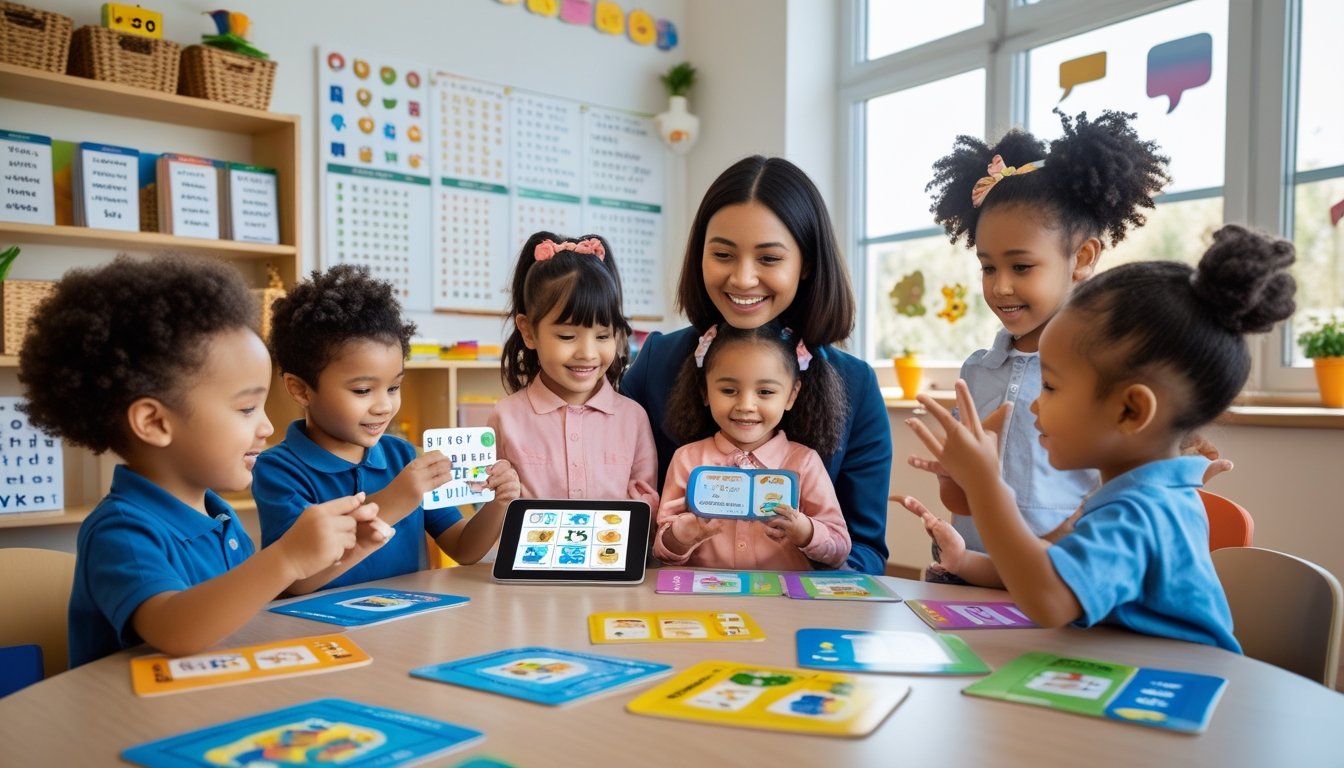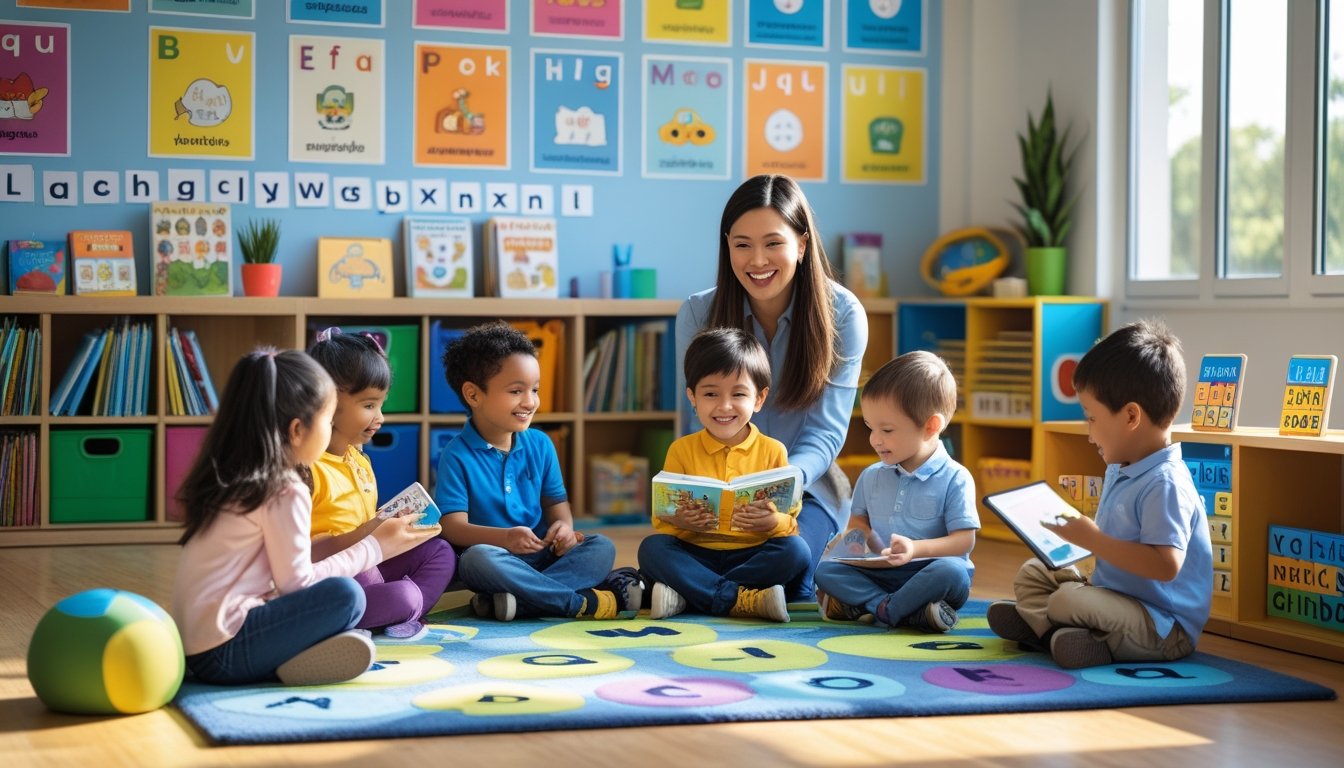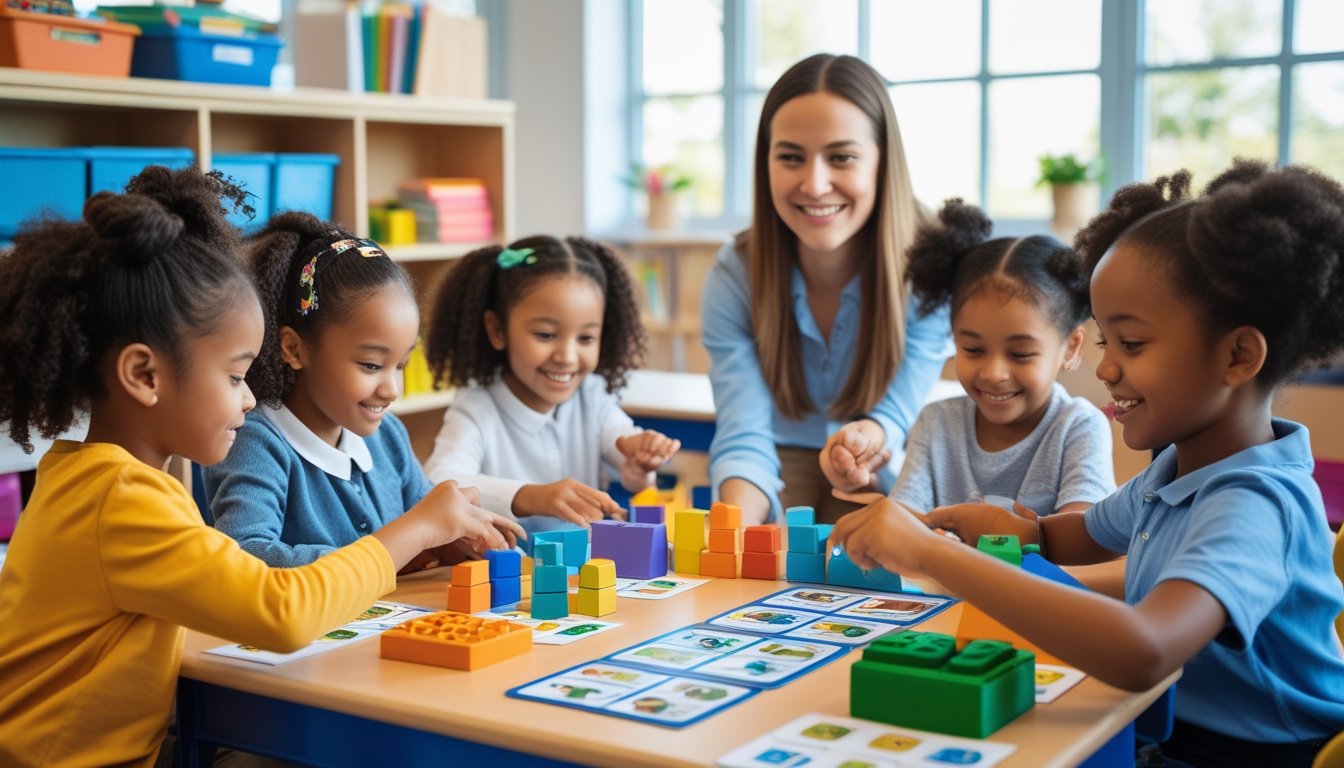Late updated: 24 Jul 2025 09:07
Written by:
Innovative Ways To Enhance Children's Language Learning: Modern Strategies for Success
Children's language learning has become increasingly dynamic and engaging, sparking curiosity and enthusiasm among young learners. We are witnessing a significant shift from traditional methods to thrilling, interactive techniques that captivate children's imaginations. The secret lies in integrating technology, storytelling, and play into everyday learning experiences. With the right blend of innovative strategies, we can provide an enriching environment that nurtures our children's language development and builds robust language skills.

By crafting a language-rich environment that prioritises exploration and interaction, we tap into the natural curiosity of early childhood. This approach not only fosters language acquisition but also supports cognitive growth. Simple activities like educational video games or interactive storytelling sessions make learning feel more like play and less like work. Our goal is to strike a balance that maintains the child's attention and promotes a deeper engagement with language.
As we navigate through technological advancements and creative approaches, it's imperative for educators and parents to adapt and innovate. The modern landscape offers endless possibilities for crafting enjoyable and effective language learning pathways. By doing so, we build a solid foundation for lifelong learning.
Key Takeaways
- Integrative methods ignite children's language learning.
- Language-rich environments support cognitive and language growth.
- Balancing play and learning fosters lasting engagement.
Innovative Strategies to Enhance Children's Language Learning
We can greatly improve children's language abilities through modern techniques, including engaging conversations, interactive storytelling, play-inspired learning, and shared reading. These methods establish a robust foundation for communication skills and creativity.
Engaging in Meaningful Conversations
Engaging children in meaningful conversations is vital for enhancing language acquisition. We should encourage the use of open-ended questions to stimulate critical thinking and self-expression. This could involve asking children about their day or what they think about a story, promoting a dialogue that allows them to explore various outcomes and ideas.
Discussing everyday scenarios helps children articulate their thoughts. Using diverse vocabulary in these discussions enriches our learners' language exposure. Such interactions build on children's natural curiosity, allowing them to grasp complex language structures intuitively.
Interactive Storytelling Techniques
Interactive storytelling is another powerful strategy. By involving children in tales where they can influence the plot through choices, we engage their imagination and stimulate language development. Techniques like using puppets or role-play incorporate physical activity, helping retain attention and making learning an exciting process.
When we involve children in co-creating narratives, they actively practise sentence structures and language nuances. Letting them contribute their own story elements fosters creativity and personal connection to language learning, making storytelling a lifelong skill.
Play-Based Language Learning
Through play-based learning, we tap into children's natural proclivity for imaginative play. By integrating language elements into games, such as matching words with pictures or engaging in themed role-play, we create an environment where language development occurs naturally.
Learning through play not only makes language acquisition enjoyable but also reinforces comprehension and retention. Strategies that include board games with word challenges or collaborative story creation encourage children to explore language voluntarily and enthusiastically.
Dialogic and Shared Reading Approaches
Dialogic reading involves an interactive dialogue between the reader and the child, transforming reading into a dynamic, participatory activity. By asking predictive questions or inviting children to describe story events, we deepen comprehension and narrative skills.
Shared reading sessions, where both adult and child read together, promote a bonding experience that supports language learning. This method allows us to introduce complex vocabulary in a relatable context, guiding children through pronunciation and meaning while maintaining engagement and interest.
Utilising these innovative strategies will help lay a strong foundation for effective and joyful language learning.
Building a Language-Rich Environment for Children

Creating a language-rich environment can be a powerful way to enhance children's language learning. This involves strategies such as integrating learning opportunities into daily routines, using play-based activities like rhyming games to boost phonological awareness, and leveraging technology to support literacy development.
Maximising Language Exposure in Everyday Life
Our daily activities provide numerous opportunities for enhancing language skills. By labelling common household items, we can introduce vocabulary in a context that children understand intuitively. Simple conversations during routines—like grocery shopping—are excellent for introducing new words and concepts.
Engaging in storytelling during travel times can promote imagination and vocabulary growth. Reading diverse materials like books and magazines broadens children's understanding of language structures and genres. By integrating language learning into daily life, we ensure constant exposure that supports children's vocabulary development.
Rhyming Games and Phonological Awareness
Rhyming games are a fun way to foster phonological awareness, a foundation for reading skills. When we play these games with children, we help them notice patterns in language, making it easier for them to decode words in the future. Classic nursery rhymes and children's songs naturally incorporate rhyme and rhythm.
Encouraging children to create their own rhymes enhances creativity and deepens their understanding of sound patterns. Using playful methods to emphasise sounds and words, children learn to segment and blend sounds effectively. This playful approach to learning enables children to develop a strong phonological base that supports literacy.
Leveraging Educational Apps and Digital Resources
Technology offers dynamic resources for language learning that can complement traditional methods. Educational apps such as Endless Alphabet provide engaging, interactive experiences that help children build vocabulary and comprehension skills. Many apps are designed with colourful graphics and enjoyable activities that capture children's attention.
Digital storybooks with audio features can promote listening skills and pronunciation. Apps designed for kindergarten readiness often include tasks focused on letter-sound recognition and word identification. By integrating digital tools thoughtfully, we can enrich children's learning experiences, providing personalised learning paths that adapt to their unique needs.
Frequently Asked Questions

In exploring language learning for children, various strategies and activities stand out. Specific approaches cater to different age groups, and resources are available for educators and parents to bolster language development effectively.
What are effective strategies to support language development in early childhood education?
We advocate creating an engaging and supportive environment. By incorporating storytelling, songs, and interactive play, children can naturally develop their language skills. Such activities lay the foundation for future communication proficiency.
What types of activities can enhance speech and language skills in 3-5-year-old children?
Incorporating games and playful interactions like rhyming, singing, and storytelling can significantly boost speech and language abilities in young children. With these tools, children are encouraged to explore their creativity and develop language skills in enjoyable ways.
Which methods are proven to foster language acquisition in 6-12-year-old students?
For this age group, employing diverse strategies such as group discussions, language-based projects, and interactive reading activities can be beneficial. Such methods engage students and encourage expression, expanding their vocabulary and comprehension.
How can educators promote language growth within the classroom environment?
Educators can design lessons that integrate language skills across subjects. Incorporating discussions, projects, and multimedia resources helps to reinforce language concepts. This approach ensures students have ample opportunities to practise and refine their communication abilities.
Can you suggest engaging activities specifically designed for 4-5-year-olds to boost their language abilities?
Activities like interactive storytelling, puppet shows, and language-focused games are excellent for this age group. These activities promote listening and speaking skills, allowing children to experiment with new words in fun and supportive settings.
What resources are available for parents and educators that encourage speech and language development?
Books, educational apps, and language games offer valuable support for language development. Additionally, attending workshops and collaborating with therapists or language specialists can provide further insights and tips. These resources and expert guidance ensure comprehensive support for children's language growth.
